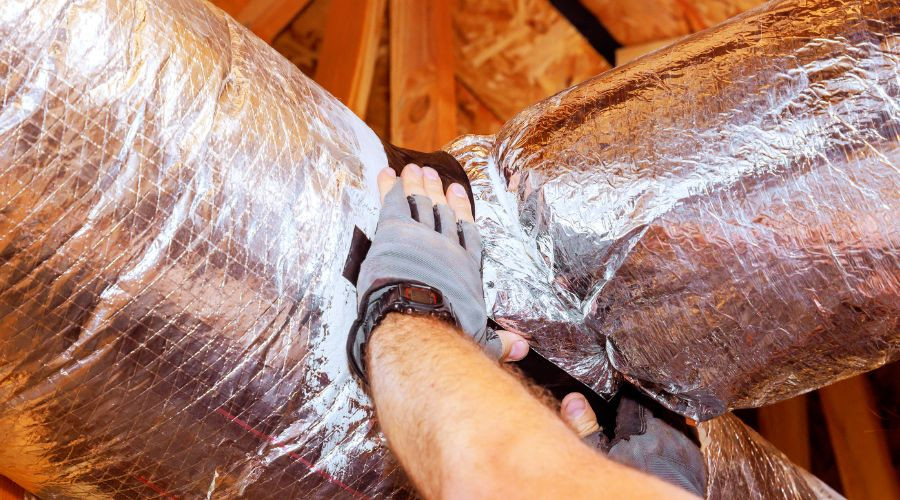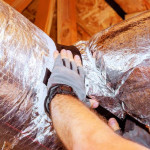How to Identify Damaged Ductwork
Dusty air and high energy bills often point to underlying HVAC issues. This guide clarifies common warning signs such as strange noises and poor airflow. Simple, actionable tips offer immediate improvement in system efficiency and indoor air quality. Hidden duct problems can drain a household budget; recognizing these vital signs helps prevent long-term damage.
Dusty Vents or the Home Is Dusty
 Air ducts with holes or leaks allow dust and debris to enter the HVAC system, which then circulates throughout the living space. These compromised areas provide entry points for air contaminants typically filtered out by a sealed system. When dust rapidly accumulates on surfaces shortly after cleaning, damaged ductwork is often to blame.
Air ducts with holes or leaks allow dust and debris to enter the HVAC system, which then circulates throughout the living space. These compromised areas provide entry points for air contaminants typically filtered out by a sealed system. When dust rapidly accumulates on surfaces shortly after cleaning, damaged ductwork is often to blame.
The condition of ductwork directly impacts indoor air quality. According to the EPA, pollution levels inside homes can be 2–5 times greater than outside, and faulty ductwork plays a role in this disparity. Inspections revealing tears, disconnections, or corrosion, especially at seams or connection points, suggest entryways for airborne pollutants.
Timely repairs help prevent ongoing contamination. Professional duct sealing blocks leaks, keeping out pollutants and preserving clean airflow. This not only enhances air quality but also improves system efficiency by stopping conditioned air from escaping. Well-sealed ductwork supports a closed, controlled ventilation system.
Contaminated air ducts reduce HVAC performance and pose serious health risks. Residents may experience worsening respiratory or allergy symptoms without knowing the cause. Dust, mold spores, and allergens travel through damaged ducts, circulating during every heating or cooling cycle.
Over time, frequent exposure to airborne irritants can lead to the development of chronic respiratory conditions. Increased coughing, wheezing, or breathing difficulties may indicate deteriorating indoor air quality linked to leaky ductwork. The EPA identifies damaged ducts as a significant factor in indoor pollution, which often exceeds outdoor levels.
People with asthma or seasonal allergies are particularly sensitive to such changes. Symptoms tend to worsen indoors and improve when away from the affected space, an indication that air distribution systems need attention. Clean, sealed ductwork plays a key role in maintaining a healthy indoor environment.
Airflow Issues and Uneven Cooling
 Inconsistent airflow and fluctuating temperatures are common signs of damaged ducts. HVAC systems often struggle to maintain comfort when ventilation pathways are compromised by cracks, holes, or loose connections. These issues may begin subtly and escalate quickly.
Inconsistent airflow and fluctuating temperatures are common signs of damaged ducts. HVAC systems often struggle to maintain comfort when ventilation pathways are compromised by cracks, holes, or loose connections. These issues may begin subtly and escalate quickly.
Some rooms may feel significantly warmer or cooler than others, a strong indicator of duct leakage. Conditioned air escapes through breaks before reaching intended areas, creating noticeable temperature differences, especially in rooms farthest from the HVAC unit. The result is diminished comfort and increased energy use.
Weak airflow from vents signals potential leaks or obstructions. Reduced air pressure leads to underperforming vents and uneven distribution. The Department of Energy reports that damaged duct systems can lose up to 30% of conditioned air through leaks, affecting both comfort and energy costs. Prompt repair helps restore balance and improves overall system performance.
Rising Energy Bills
Unexpected increases in utility costs, even with consistent usage patterns, often point to duct leakage. Compromised ductwork causes conditioned air to escape into unconditioned areas like attics or crawlspaces, prompting HVAC systems to work harder and longer to maintain set temperatures. This inefficiency quickly becomes expensive.
As heated or cooled air escapes, the HVAC system compensates with extended cycles, resulting in greater energy consumption. The Department of Energy estimates that typical homes lose 20–30% of conditioned air through duct leaks. This waste directly contributes to elevated utility bills.
Monitoring energy statements can reveal spikes unrelated to seasonal changes or rate increases, highlighting inefficiencies within the duct system. Sealing and repairing ductwork improves performance and reduces unnecessary air loss. Energy savings of 10–20% are common after professional repairs, making duct maintenance a cost-effective strategy for improving comfort and reducing expenses.
Call Boutwell's Air Masters
Boutwell's Air Masters is a heating & AC company that has been serving the needs of Pensacola and surrounding areas since 1973. They offer transparent pricing, tailored solutions, and expert workmanship. Call them for indoor air quality services in Pensacola, FL.



